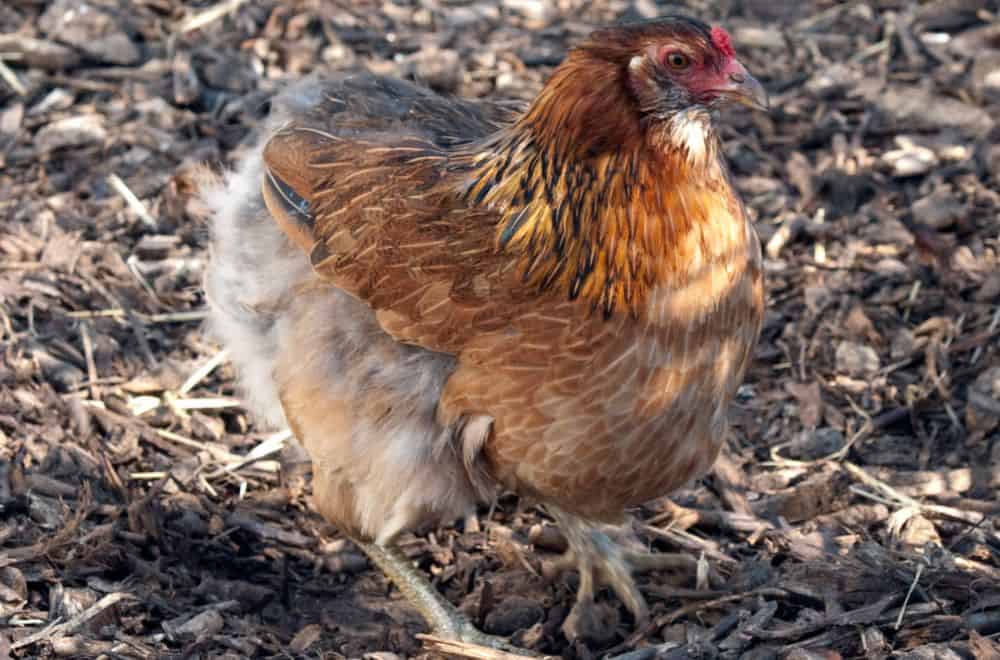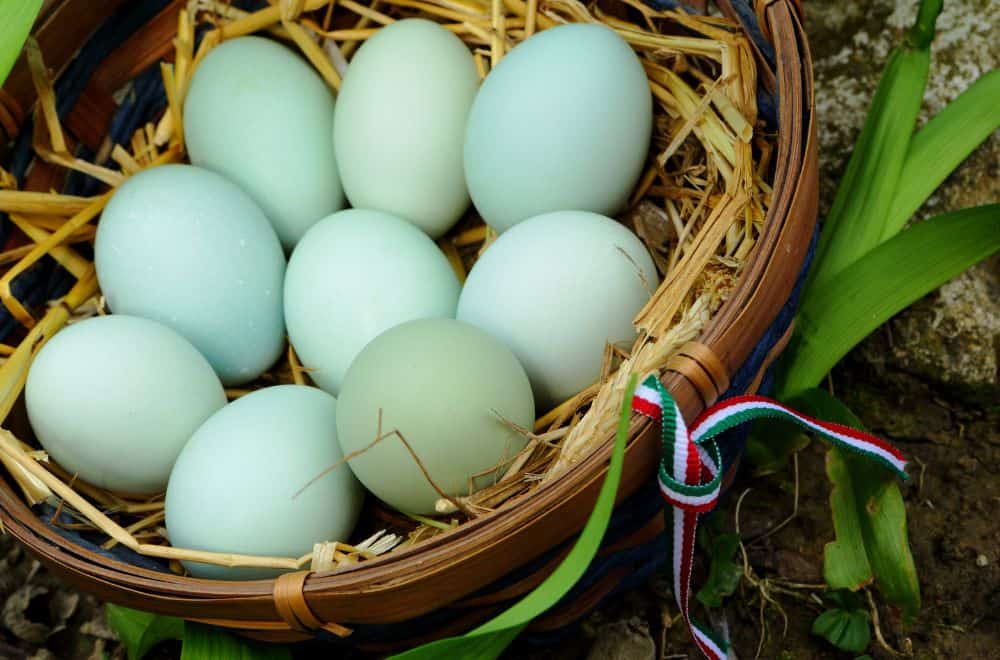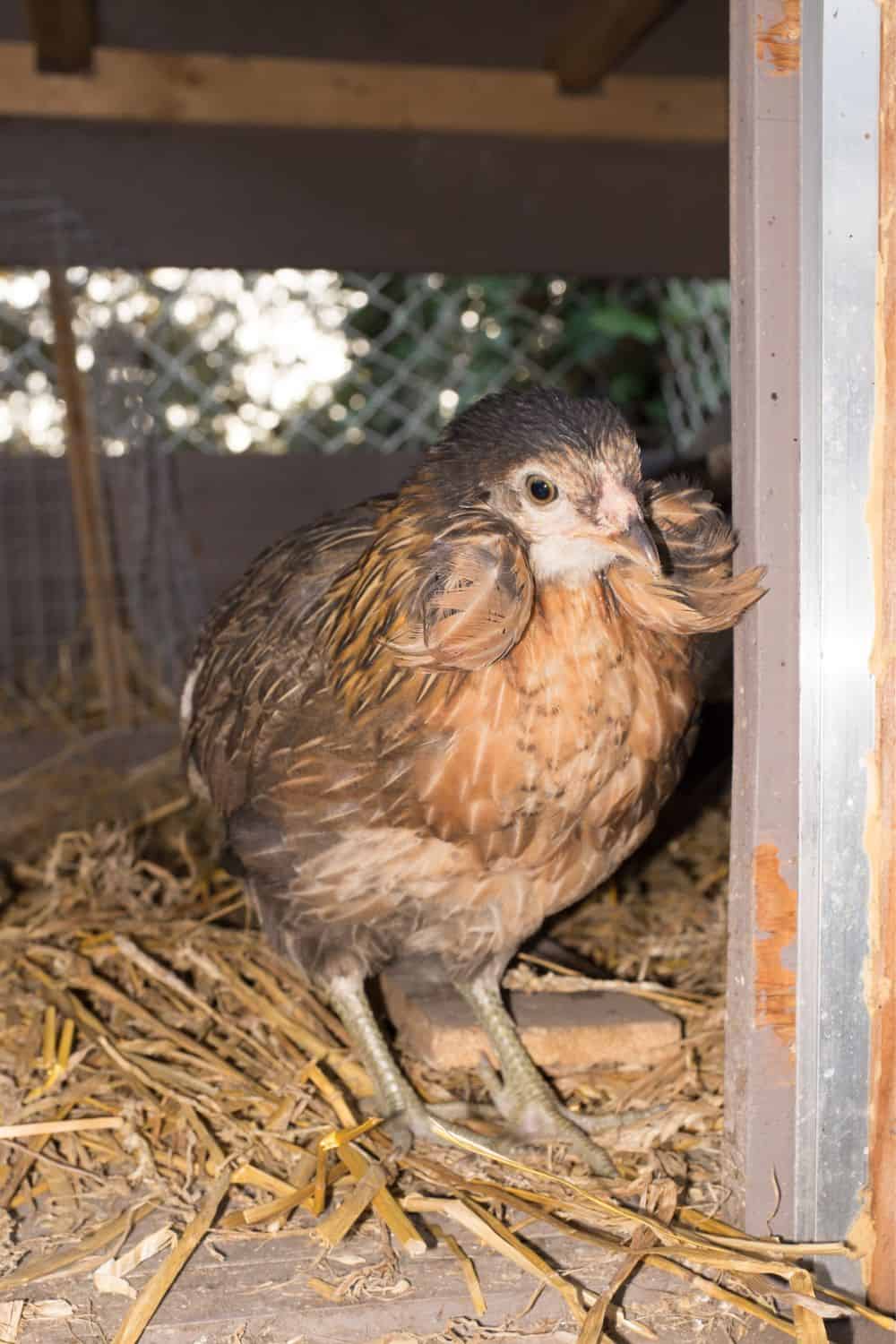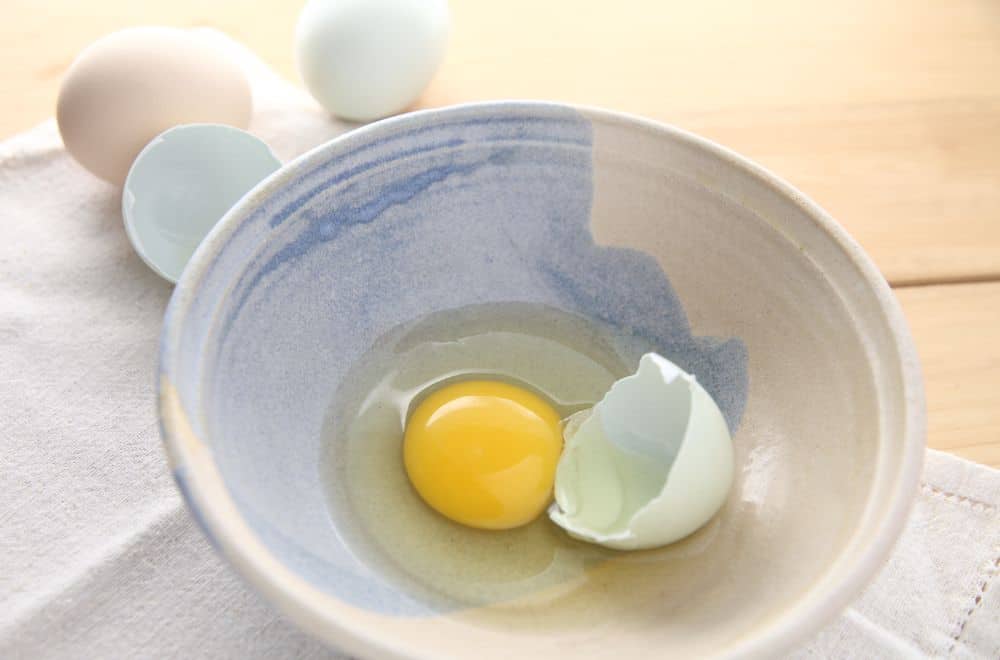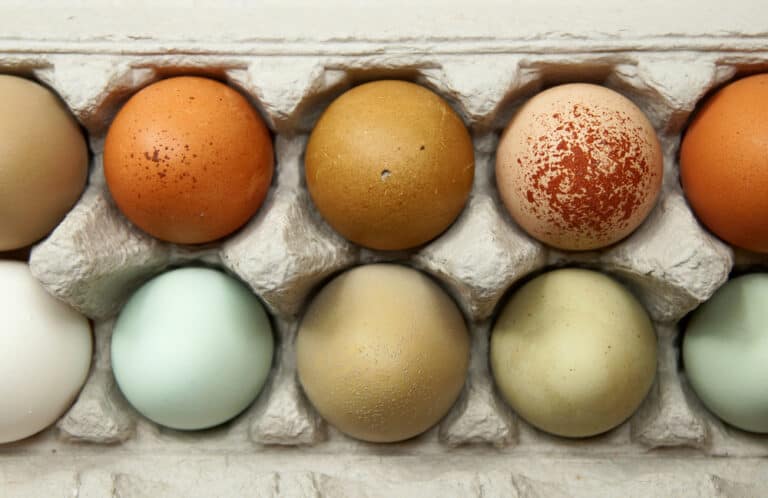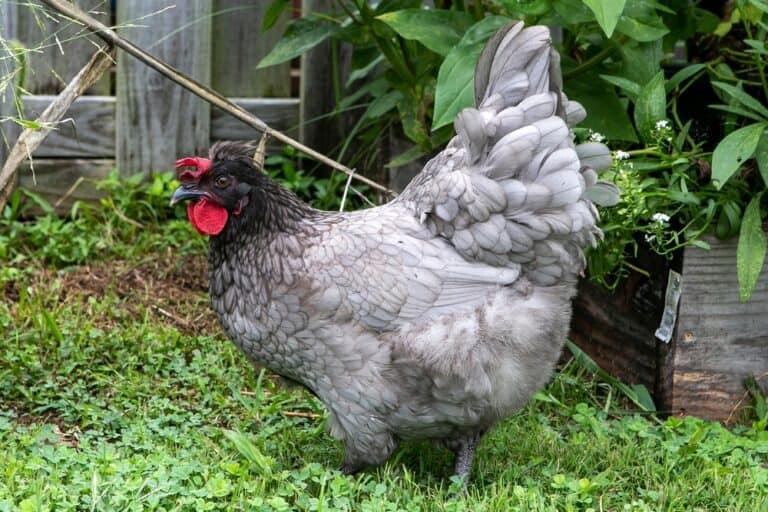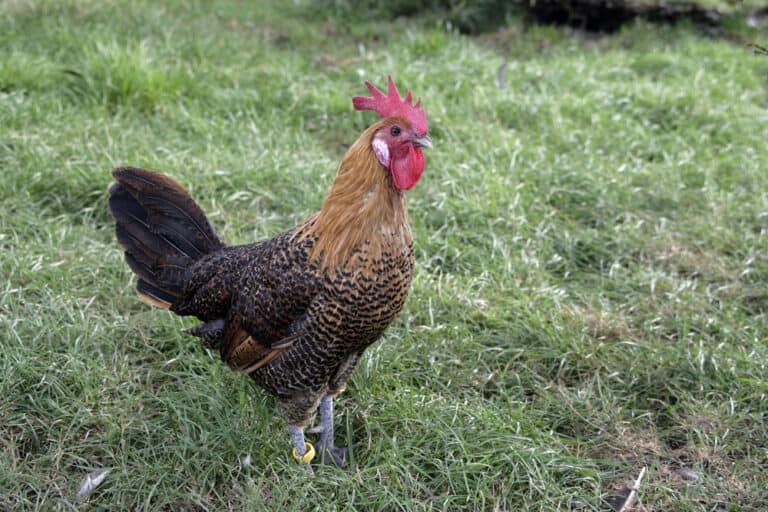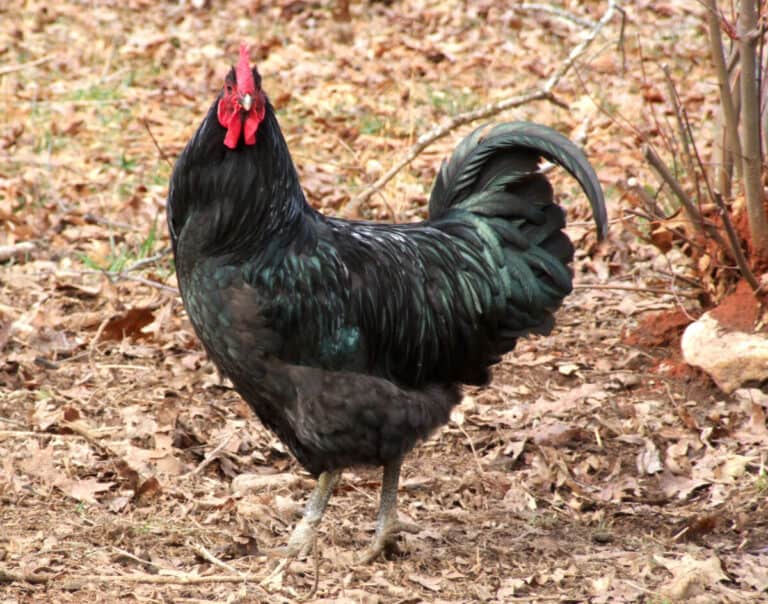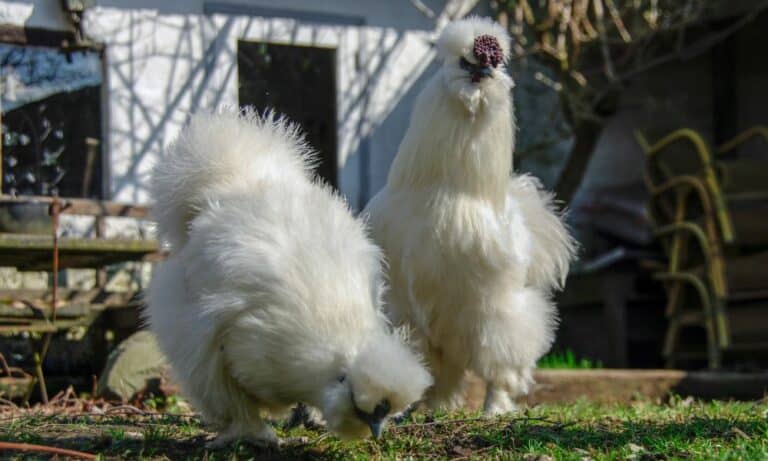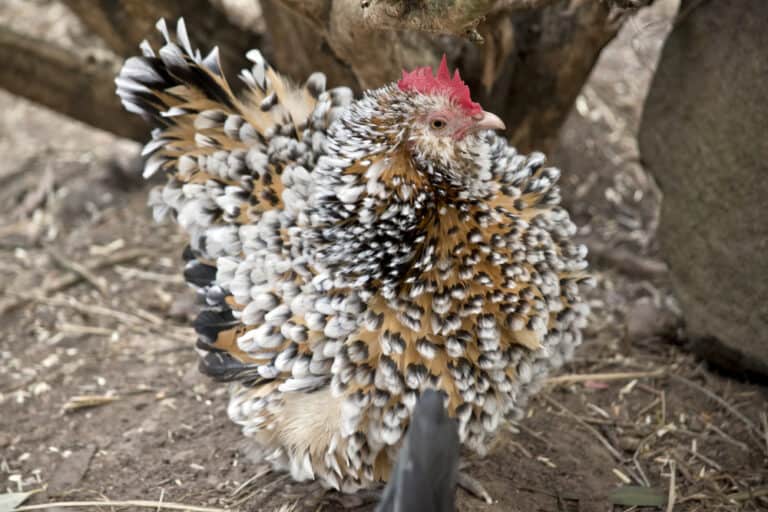The Araucana chicken is an interesting breed with some unique features. And if you’re interested in learning more about it, you’ve come to the right place!
We’re going to look at everything you need to know about Araucanas, from their history to their characteristics and behavior. And if you’re thinking about keeping them yourself, we’ve got some top tips to keep them happy and healthy.
So if you’re ready to find out more, read on!
The history of the Araucana chicken
There’s a clue to the history of the Araucana chicken in its name. It reflects the place it’s believed to have originated, the region of Araucanía in Chile.
Beyond that, however, little is known about how the breed first developed. What we do know is that it was widespread in Chile by early in the twentieth century. The chickens were recorded by a Spanish visitor to the country, Salvador Castelló, in 1914.
Castelló was an aviculturist – someone who keeps and breeds birds – so the Araucanas were of great interest to him. And it was he who gave them their name.
They were so distinctive that they were originally thought to be an entirely new species. A brand new species name, Gallus inauris, was proposed for them. But within a few years, it was established that they were in fact part of the same species as other domestic chickens, Gallus gallus domesticus.
From Chile, the chickens spread to New Zealand, Australia, the United Kingdom, and the United States. But there’s been lots of debate about who the ancestors of the first Araucanas were.
Some believe that they were chickens brought by Columbus to the Americas in 1492, and possibly came from the Polynesian islands. Others believe that the chickens were present in Chile well before Columbus set foot on American shores.
Whatever the truth of the matter, Araucanas are today well known around the world.
Why are Araucana chickens special?
So what is it that makes Araucana chickens so special that they were once thought to be a separate species?
Well, their most distinctive feature is the eggs laid by the hens. Rather than having brown or white shells, Araucana eggs are blue.
They’re unusual in other ways too. In the US, the breed standard for Araucanas specifies that they must be “rumpless”. In other words, they should have no tail or tailbone. In other parts of the world, standards are looser and Araucanas may have tails or not.
North American Araucanas also have long tufts of feathers on their ears.
There are other variations between the breed standards too. The European registry, the Entente Européenne d’Aviculture et de Cuniculture, recognises no fewer than twenty different varieties of plumage.
In the UK, however, only twelve different colors are recognised. And in the US, standards are even more restrictive, with just five color varieties: black, white, black breasted red, golden duckwing and silver duckwing.
All Araucanas have a particular type of comb, known as a “pea comb”. This medium sized comb has three ridges that run from back to front, with the middle ridge more prominent than the outer ridges. It’s this which makes it look a little like a pea pod, hence the name.
There are both standard and bantam Araucanas. Standard adult males weigh between 6 and 7 pounds, while females are between 5 and 6 pounds.
Unusually, there’s some overlap between the sexes when it comes to the size of bantams. Male bantams are between 26 and 30 ounces, while females are between 24 and 28 ounces.
Why do Araucana chickens lay blue eggs?
Laying blue eggs is a very rare trait among chickens. In fact, only two breeds recognised in the US do this – Araucanas and Ameraucanas. And Ameraucanas are actually the result of breeding Araucana chickens so as to remove the genes that make them rumpless and give them tufted ears.
The ability to lay blue eggs is also genetic. Araucanas have what’s known as the oocyan gene – simply meaning “blue egg”. But why do they have that when other breeds don’t?
A number of different theories have been advanced to explain this.
Some believe that it’s the result of a retrovirus. That’s a virus that inserts a copy of its own DNA into the host organism’s genome.
Others think that it’s a genetic mutation. That happens when DNA is damaged, which can be the result of a number of different processes.
And still others believe that it’s the result of breeding between Araucanas and birds called Tinamous, which are found in central and south America.
For now, at least, no-one really knows for sure why Araucanas have the oocyan gene.
Are Araucana chickens good egg layers?
We already know that if you keep Araucana hens, you can look forward to pretty blue eggs. But just how many of them might you get?
Well, while Araucanas aren’t the most prolific egg layers, they’ll usually produce between three and four eggs a week. That’s a very decent 160 to 200 eggs a year.
As with all chickens, a balanced diet rich in all the nutrients they need will optimize egg production. And try to avoid any causes of stress for your chooks too. Happy hens make great layers!
They tend to stop laying during the winter months, but will get going again quickly when warmer temperatures return.
Hens typically start to lay from around 20 weeks of age. And they don’t usually go broody, which keeps up egg production. If you want to see sweet little Araucana chicks, though, you might need to invest in an incubator.
Do Araucana chicken eggs taste different?
We know that Araucana eggs look different. They range in color from light blue to blue-green and shades of olive. But do they taste different too?
The short answer is no, they taste pretty much the same as other hens’ eggs! The shell color, it seems, doesn’t make any difference to what’s inside.
And the nutritional content is the same as that of other hens’ eggs too. Unfortunately, the idea that Araucana eggs are lower in cholesterol than those of other breeds simply isn’t true.
Is my Araucana chicken a boy or a girl?
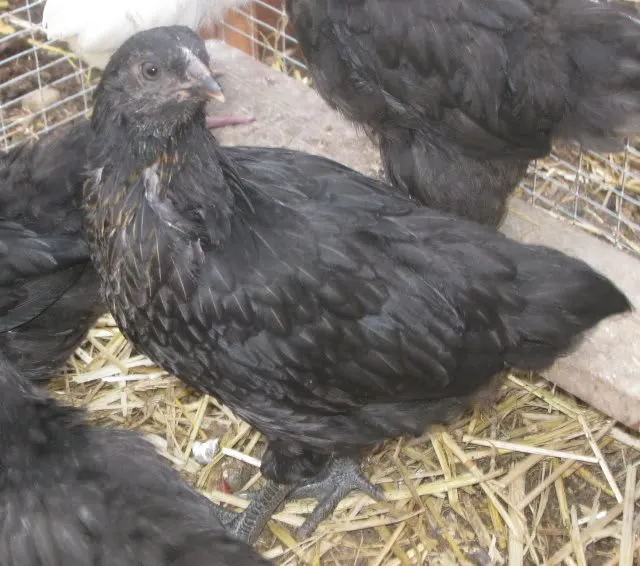
If you’re hoping for eggs, you definitely need to make sure you have a hen and not a rooster! But just how do you sex Araucana chicks?
Well, in some chicken breeds it’s easy to tell as soon as the chick hatches. With Barred Plymouth Rock chicks, for example, the size and position of a white spot on their heads is a major hint. Know what to look for, and you’ll be able to accurately sex hatchlings 80 per cent of the time.
But unfortunately, life isn’t always so simple. And that’s the case with Araucana chickens. It might be many weeks after the chicks hatch before you can tell whether they’re male or female. And if you have only one chick and no peers to compare it to, the task will be harder still.
So what do you need to look for? Well, males and females differ in a number of ways:
- their plumage
- their combs
- their size
- their behavior.
Let’s take a closer look at each of these.
Plumage
The feathers are one of the key ways that adult males and females differ. But it can take some time for those differences to become apparent in younger chickens.
Roosters have longer, pointier feathers, while hens’ feathers are more rounded. Male birds also develop longer feathers on their back (the “saddle”), as well as what are known as “sickle feathers”. These are long, curving feathers that appear on their tails.
All these differences, however, take time to develop. They may start to be visible when your young chickens are fully feathered, at about 10 weeks of age. But it can be 13 weeks or longer before decisive factors like the presence (or absence) of sickle feathers appear.
Combs
Generally speaking, male birds have ruddier combs than females. Of course, it’s much easier to tell the difference if you have chicks of different sexes to compare!
The comb of Araucanas isn’t very big, and their feathers can get in the way of taking a good look. The best approach is to hold them and gently blow the feathers away from the comb.
The difference in color tends to be visible in chicks from about seven weeks old. So this can be a good, relatively early indication of whether your new arrival is male or female.
Size
Both standard and bantam male Araucana chickens are bigger on average than their female counterparts. But it can take time to see the difference.
Standard males are about 6 pounds on average, compared to 5 pounds for hens.
With the smaller bantams, size isn’t particularly helpful as a differentiator. The average male is only a few ounces heavier than the average female. And larger bantam hens can be just as big as smaller roosters.
Behavior
Male chickens of all breeds show quite different behavior to females as they develop.
They strut, crow, and are generally more inquisitive, stroppy and bold than females! Those differences, though, aren’t present in chicks. And indeed, it can take quite some time before your chickens enter the equivalent of their teenage years and you can see the difference.
Some people have found that cockerel behavior becomes apparent at about the same time as those sickle feathers. So if you hear a loud cock-a-doodle-do at about 13 weeks, you’ve got a boy!
Are Araucana chickens friendly?
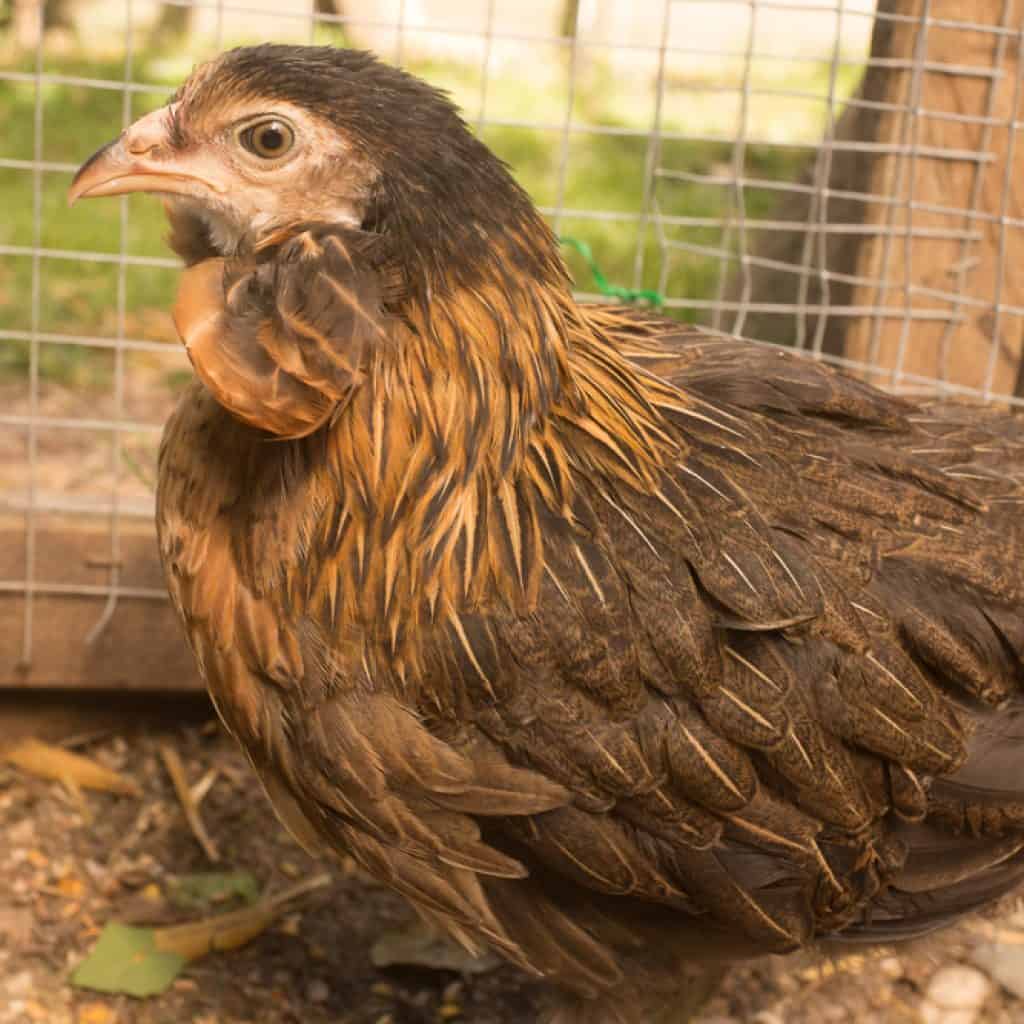
In most cases, yes! Araucanas are generally sweet natured birds, who’ll happily chat to their humans.
Birds that have been hand-reared will usually be the friendliest, as they’ve been used to people from a young age. They’ll typically take feed from your hand, and they’ll tolerate small children too. Even cocks tend not to be aggressive.
Not all Araucanas enjoy being picked up, however. So if you’re looking for a pet for a small child, talk to the breeder about their birds’ temperaments.
Araucanas are inquisitive, athletic and independent spirited. They can fly well for short distances, and they’ll do best when left to roam free. They’re also excellent foragers, able to supplement their feed with all manner of greens and grubs.
If you do confine them, they’ll need plenty of space and activities to stretch their wings and avoid boredom. They’ll need at least four square feet per bird in a coop, and the more space they get, the better.
For laying, hens will be fine in a nesting box that’s a foot square. And you’ll usually find that one nesting box for every three hens is a good ratio.
Are Araucana chickens healthy?
Araucana chickens tolerate a range of temperatures well, and their smaller comb is less vulnerable to frostbite. As with all chickens, of course, they’ll need shelter, shade, and continual access to cool, fresh water.
But they do have some problems linked to their unusual genetic composition. There’s a very high mortality rate for chicks bred from two birds with the tufted ear gene. And hatching rates generally are low.
The absence of a tail can also cause health issues. Araucanas don’t have an uropygial gland, the gland which sits at the base of the tail in other breeds. This gland releases oils that help keep the feathers waterproof and in good condition. Araucanas, however, have to rely on preening with their beaks.
The lack of a tail can also make it difficult for Araucanas to breed successfully.
All this means that sadly, many Araucanas don’t make it to adulthood. But those that do tend to be hardy birds. And their typical life expectancy is in line with that of other breeds, at between 5 and 8 years.
Beautiful chooks and beautiful eggs
That brings us to the end of our look at the Araucana chicken. We hope you’ve enjoyed learning more about this interesting bird, and its beautiful blue eggs.
Araucanas need plenty of space and stimulation, so they’re not for everyone. But if you have the room for them, you can enjoy intelligent, inquisitive and friendly birds. And you’ll get some very pretty eggs for your breakfast table too!

